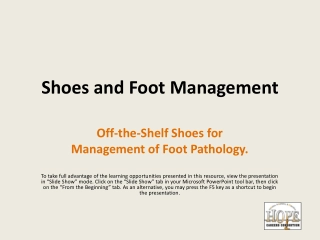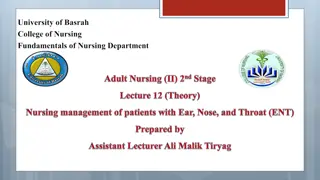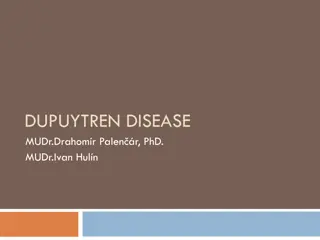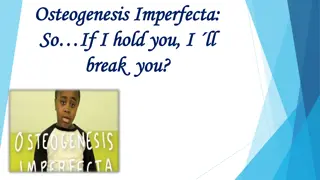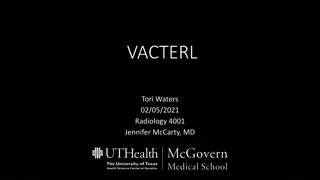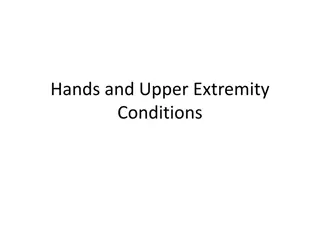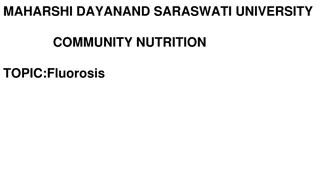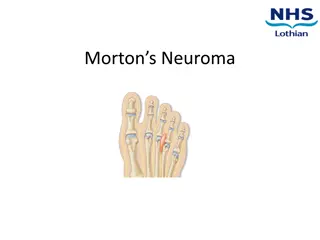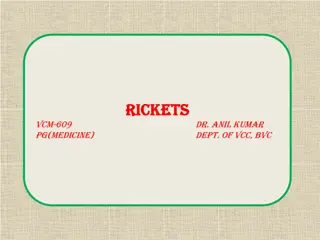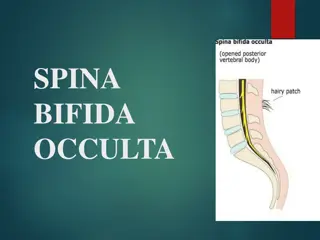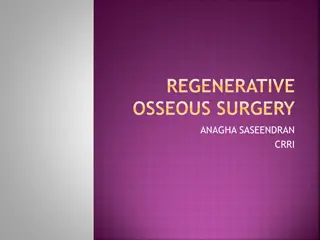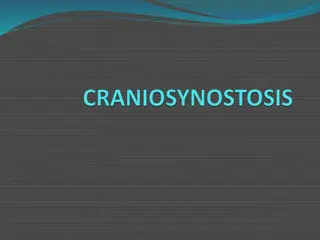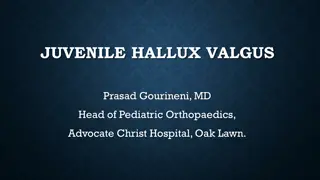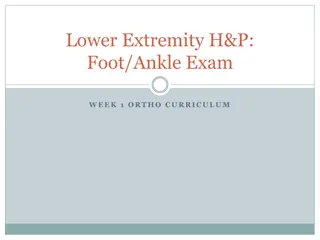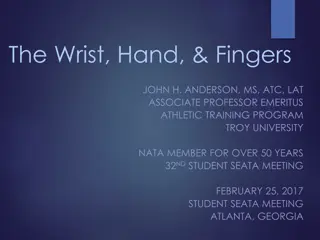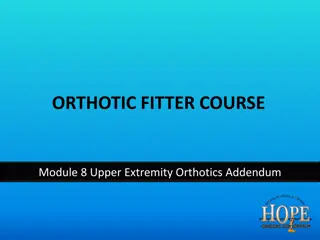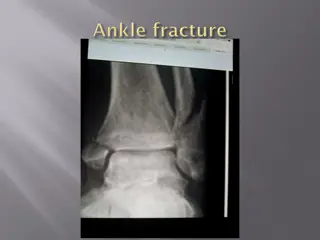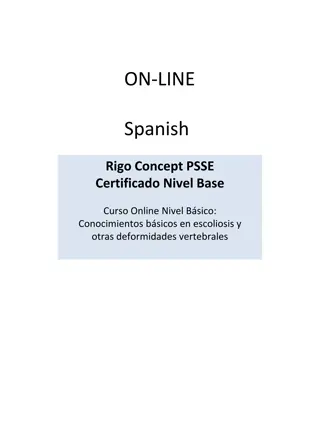Footwear Management and Orthopedic Shoe Standards
This resource provides valuable information on off-the-shelf shoes for foot pathology management, including extra-depth shoes designed to relieve excessive foot pressure and accommodate foot deformities. It also outlines the specifications for orthopedic footwear, emphasizing the importance of corre
4 views • 18 slides
Understanding Rhinosinusitis: Symptoms, Causes, and Classification
Rhinosinusitis, formerly known as sinusitis, is an inflammation affecting the paranasal sinuses, nasal mucosa, and nasal cavity. This condition is categorized based on the duration of symptoms as acute, subacute, or chronic. Various factors contribute to the development of rhinosinusitis, including
1 views • 46 slides
DUPUYTREN DISEASE
Dupuytren's disease is characterized by fibrotic nodules and bands in the palmar aponeurosis, leading to flexion deformities in the fingers. The etiology is unclear, with higher incidence in Europe. Clinical presentation varies, with treatment options including collagenase injections, needle aponeur
4 views • 11 slides
Understanding Osteogenesis Imperfecta: Causes, Types, and Treatment
Osteogenesis Imperfecta is a genetic disorder affecting bones, with various types ranging from mild to severe. It is caused by mutations in specific genes and is characterized by bone fragility, fractures, and other skeletal deformities. Diagnosis involves clinical and genetic tests. Management incl
0 views • 13 slides
Podiatrist's Role in Managing Foot Involvement in Rheumatic Diseases
Rheumatology encompasses over 200 conditions affecting the musculoskeletal system, with foot involvement being significant in conditions like RA and OA. Podiatrists play a crucial role in diagnosing, treating, and preventing foot problems associated with inflammatory arthritis, such as joint damage,
0 views • 20 slides
Case Study: VACTERL Association in a Newborn Female with Imperforate Anus
Newborn female with VACTERL association, imperforate anus, and perianal skin tag identified at birth. Patient transferred for surgical intervention and further workup due to associated abnormalities. Imaging studies show multiple sacral vertebral anomalies. Differential diagnosis includes genetic sy
0 views • 16 slides
Causes of Disabilities Across Different Stages of Life
Disabilities can arise at various stages of life, including prenatal, perinatal, infancy, early childhood, adolescence, adulthood, and old age. The causes of disabilities can be categorized into prenatal, perinatal, and postnatal factors. Prenatal causes include genetic deformities, maternal health
0 views • 24 slides
The Integral Connection between Church and Mission: A Historical Perspective
The pivotal relationship between church and mission has been a central focus in the history of missionary work, with the division between them seen as a significant drawback. The emergence of missionary societies as separate entities from the church has led to deformities and challenges in fulfillin
0 views • 36 slides
Overview of Hands and Upper Extremity Conditions
This informative content covers various hand and upper extremity conditions including nerve innervation, deformities, splints, and syndromes such as carpal tunnel syndrome and cubital tunnel syndrome. It discusses key nerves like the ulnar, median, and radial, their functions, associated deformities
1 views • 40 slides
Understanding Fluorosis: A Critical Health Concern in Endemic Regions
Fluorosis, a prevalent condition in parts of India, China, Tanzania, and South Africa, affects millions due to high fluoride levels in drinking water. It manifests as dental and skeletal fluorosis, causing various symptoms based on exposure levels. Dental fluorosis leads to enamel discoloration and
0 views • 10 slides
Understanding Morton's Neuroma: Causes, Symptoms, and Management
Morton's Neuroma is a painful condition affecting the nerves in the front of the foot, commonly caused by factors like tight calf muscles, inappropriate footwear, and toe deformities. Symptoms include altered sensation and various types of pain. Diagnosis involves a physical examination, and managem
0 views • 13 slides
Understanding Rickets: Causes, Symptoms, and Pathophysiology
Rickets is a metabolic bone disorder primarily caused by deficiencies in vitamin D, calcium, or phosphorus. This leads to softening and weakening of bones, affecting bone growth and remodeling. Genetic, nutritional, and hormonal abnormalities contribute to this condition, impacting young growing ani
0 views • 16 slides
Understanding Tuberculosis of Hip and Knee Joint Deformities
Tuberculosis can affect the hip and knee joints, leading to various deformities and complications if left untreated. Common sites of TB in knee joint, neglected cases due to hamstring contracture, path mechanics of deformity development, along with differential diagnoses and treatment options are di
0 views • 8 slides
Understanding Spina Bifida Occulta: Symptoms, Causes, and Treatment
Spina Bifida Occulta is a common neural tube defect, usually mild and hidden. It affects the lumbosacral area, characterized by vertebral arches not fusing, resulting in spinal processes defects without external protrusion. Common features include dimples, hairy patches, and normal spinal cord. Neur
0 views • 10 slides
Understanding Regenerative Osseous Surgery in Periodontal Therapy
Regenerative osseous surgery is a procedure aimed at reshaping the alveolar bone to correct deformities caused by periodontal disease. This comprehensive guide covers the definition, types, indications, and contraindications of osseous surgery, emphasizing the goal of achieving ideal periodontal reg
0 views • 26 slides
Forensic Science Lab: Fingerprint Collection and Classification
Engage in a hands-on forensic science lab to learn how to collect and classify inked fingerprints. In this lab, students will gather prints, use magnifying glasses, and categorize the prints according to specific patterns. Detailed steps and required equipment ensure a thorough understanding of the
0 views • 10 slides
Understanding Craniosynostosis: Premature Fusion of Cranial Sutures
Craniosynostosis is a pathological condition resulting from premature fusion of cranial sutures, leading to deformities in the cranial vault and base. It affects skull growth and brain development, with closure of sutures and fontanelles occurring by adulthood. Historical insights by Otto and Vircho
0 views • 74 slides
Understanding Juvenile Hallux Valgus: Diagnosis and Management Insights
Delve into the world of juvenile hallux valgus, a condition affecting the alignment of the big toe in children. Learn about its different forms based on age groups, associated anatomical features, pathoanatomy, soft tissue, and bony deformities. Discover the hereditary and syndromic links, diagnosti
0 views • 45 slides
Lower Extremity H&P: Foot/Ankle Exam Overview
The lower extremity H&P for foot/ankle examination in orthopedic curriculum involves various steps such as general ortho physical exam maneuvers, inspection for redness and deformities, palpation of specific areas for tenderness and fractures, range of motion assessment, muscle strength testing, and
0 views • 7 slides
Comprehensive Evaluation of the Wrist, Hand, and Fingers
This detailed assessment covers the history, inspection, palpation, and range of motion tests for the wrist, hand, and fingers to evaluate potential injuries or conditions affecting these areas. Includes information on pain location, deformities, ligament evaluations, and joint movements.
0 views • 40 slides
Upper Extremity Orthotics Addendum Overview
This module covers various upper extremity conditions and their orthotic treatment, including shoulder subluxation, epicondylitis, carpal tunnel syndrome, hand deformities, and more. It also includes product previews and a summary of the content.
0 views • 11 slides
Paediatric Anaesthesia Case Discussion: Challenges of Anaesthetizing an Infant with Pierre Robin Syndrome
Pierre Robin Syndrome (PRS) presents challenges in paediatric anaesthesia, especially in infants undergoing procedures like cleft lip repair. PRS is characterized by micrognathia, glossoptosis, and respiratory distress. Other syndromes associated with cleft lip include Treacher Collins syndrome, Gol
0 views • 56 slides
Understanding Ankle Injuries and Treatment Options
Explore the anatomy of deltoid ligaments, fibula, medial malleolus, and posterior malleolus in ankle injuries. Learn about deformities, swelling, and bruises associated with these injuries. Discover diagnostic techniques like radiographs and Lauge-Hansen classification. Delve into non-operative and
0 views • 15 slides
The Reality of Child Labor in 1906 America
John Spargo vividly describes the harsh conditions faced by children working in coal breakers and textile factories in 1906. The excerpt highlights the dangerous work environments, physical deformities, accidents, and health risks faced by these young workers. Through detailed accounts, Spargo sheds
0 views • 8 slides
Certification in Rigo Concept PSSE for Scoliosis and Spinal Deformities
This online course offers a base level certification in Rigo Concept PSSE, focusing on essential knowledge of scoliosis and other spinal deformities. Led by renowned professionals in the field, successful completion of the course allows access to further levels of certification for specific physical
0 views • 12 slides
